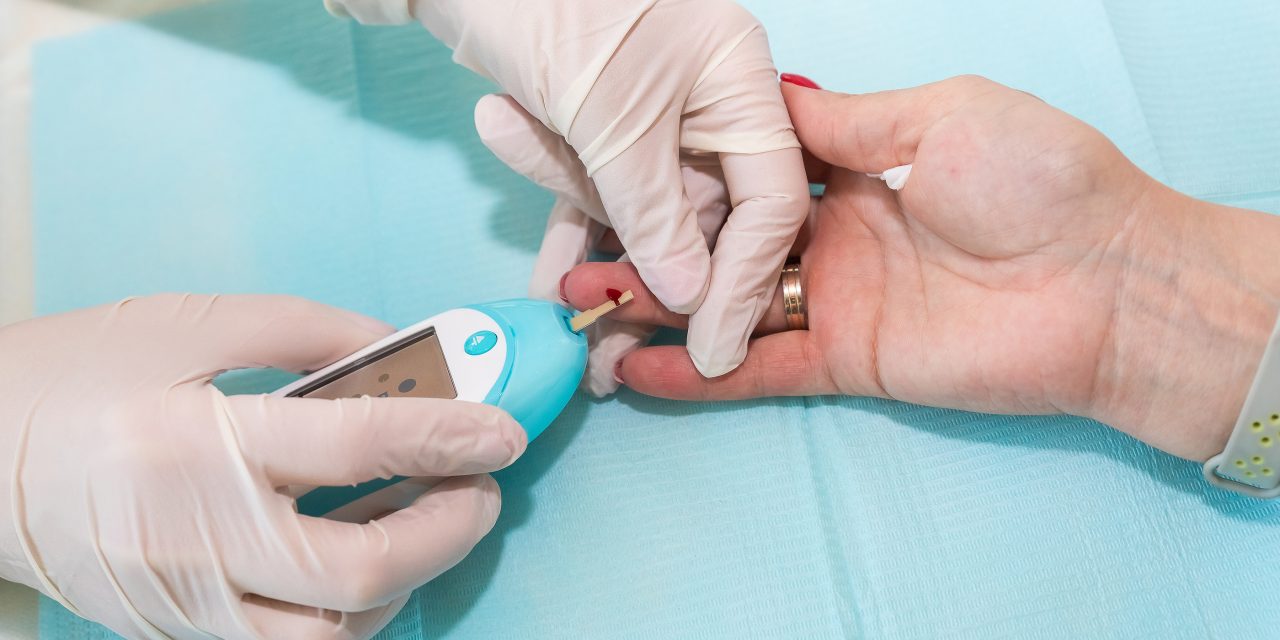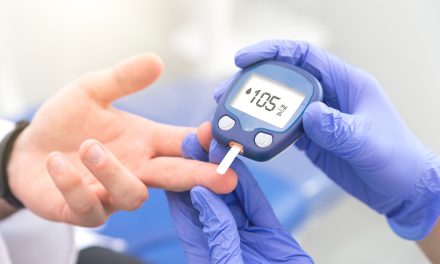Type 2 diabetes is a chronic condition affecting millions of people worldwide. Many wonder if it can be truly cured.
While a complete cure is often not possible, achieving remission where symptoms are significantly reduced or absent is a realistic goal for some individuals.
This remission is often seen when lifestyle changes and certain medical interventions are implemented effectively.

Bariatric surgery is one of the medical procedures that has shown promise in helping some people with type 2 diabetes achieve remission. For many, the idea of reversing diabetes by adopting new dietary and exercise habits is also encouraging.
Lifestyle and dietary changes can play a vital role in managing blood sugar levels and potentially moving towards remission.
Monitoring and adjusting treatment plans are essential for those with type 2 diabetes. Consistent medical guidance and support can aid in preventing complications and maintaining health.
Prevention and early intervention are equally important for those at risk of developing diabetes, as they can significantly impact the progression of the condition.
Key Takeaways
- Complete cure of type 2 diabetes is unlikely, but remission is possible.
- Lifestyle changes and medical interventions are essential for management.
- Monitoring and early intervention can improve outcomes.
Understanding Type 2 Diabetes

Type 2 diabetes is a chronic disease that affects the way the body processes blood sugar. It often involves insulin resistance, where cells in the body don’t respond well to insulin. This leads to higher levels of glucose in the blood, which can cause various health problems.
Understanding the distinctions and the role of insulin resistance is crucial.
Differences Between Type 1 and Type 2
Type 1 diabetes is an autoimmune condition where the immune system attacks the pancreas, reducing insulin production. It typically appears in childhood or adolescence. Meanwhile, type 2 diabetes often develops in adults and is linked to lifestyle factors such as diet and exercise.
In type 2, the pancreas still produces insulin, but the body doesn’t use it efficiently. This is known as insulin resistance.
Key Differences:
- Insulin Production: Type 1 lacks insulin; type 2 has ineffective usage.
- Onset Age: Type 1 often starts in young people; type 2 in adults.
- Causes: Type 1 is autoimmune; type 2 is linked to lifestyle and genetics.
The Role of Insulin Resistance
Insulin resistance plays a pivotal role in type 2 diabetes. When cells in the muscles, fat, and liver don’t respond properly to insulin, the pancreas tries to produce more. Over time, the pancreas can’t keep up, resulting in elevated blood sugar levels.
Contributing Factors:
- Obesity: Excess weight can increase insulin resistance.
- Inactivity: Lack of exercise can prevent effective insulin use.
- Genetics: Family history might play a role in insulin resistance.
Addressing lifestyle factors such as diet and exercise can help manage insulin resistance and blood sugar levels, potentially delaying or preventing the progression of type 2 diabetes.
Diabetes Remission and Its Possibility

Diabetes remission is gaining recognition as a potential outcome for some people with type 2 diabetes. Understanding how remission works and what factors play a role can help individuals explore their options for managing this condition.
Defining Remission in Diabetes
Diabetes remission refers to a return to normal blood sugar levels without the need for diabetes medication. Unlike a cure, remission does not mean that diabetes is permanently gone. The concept is gaining traction as more people achieve significant blood sugar control through lifestyle changes or medical interventions.
Experts distinguish between partial and complete remission. Partial remission occurs when glucose levels are lower but not entirely normal. Complete remission means glucose levels are within the normal range consistently. The term remission is preferred over “cure” as it emphasizes the need for ongoing management and monitoring of the condition.
Factors That Influence Remission
Several factors can increase the likelihood of achieving remission. Lifestyle changes, such as a healthy diet and regular exercise, are critical.
Weight loss, particularly through methods like bariatric surgery, has shown to improve chances of remission by reducing insulin resistance and promoting metabolic health.
Other contributing elements include early diagnosis and treatment of type 2 diabetes. Individuals with a shorter duration of diabetes and those who manage to maintain weight loss have a higher chance of experiencing remission. Intensive lifestyle interventions have been associated with a greater likelihood of partial remission in some studies.
Lifestyle Modifications for Managing Diabetes

Managing type 2 diabetes involves significant lifestyle changes. Simple adjustments in diet and exercise can improve glucose levels, aid weight loss, and reduce the risk of complications like heart disease.
Importance of Diet and Exercise
Diet and exercise are key to managing type 2 diabetes.
Dietary changes focus on reducing sugar and refined carbs, important steps in controlling blood sugar. Emphasizing whole grains, lean proteins, and plenty of vegetables helps maintain a balanced diet and manage weight.
A regular exercise routine is also crucial.
Moderate exercise, such as brisk walking or swimming, helps lower blood glucose levels. Health professionals recommend aiming for at least 10,000 steps a day or 150 minutes of moderate exercise weekly. This activity not only assists in controlling weight but also decreases the risk of developing obesity-related complications.
Implementing Sustainable Changes
Implementing sustainable lifestyle changes requires commitment and planning.
Instead of drastic alterations, small, gradual changes are more effective and manageable. For example, starting with small diet changes, like swapping sugary snacks with fruits, can lead to significant improvements in health over time.
Incorporating exercise into daily routines makes it easier to stay active. Activities such as gardening or taking the stairs contribute to daily exercise goals. Setting achievable targets ensures long-term success. Tracking progress can be motivating and provide accountability.
Finding support, whether through healthcare providers, community programs, or family and friends, strengthens the commitment to these changes. This approach helps individuals overcome challenges and maintain their new lifestyle habits.
Medical Interventions for Type 2 Diabetes

Managing type 2 diabetes often involves a combination of medication and lifestyle changes. Medical interventions like insulin therapy and bariatric surgery play essential roles in controlling blood sugar levels and improving insulin sensitivity.
Medication and Insulin Therapy
Medication is fundamental in treating type 2 diabetes. Several options exist, from oral drugs to insulin therapy, depending on the individual’s needs and their stage of the disease.
Metformin is commonly prescribed. It lowers blood sugar by improving insulin sensitivity and reducing glucose production in the liver. Other diabetes medications, such as sulfonylureas, increase insulin production, while DPP-4 inhibitors enhance the body’s insulin usage.
Insulin therapy is essential when the body cannot produce enough insulin. Patients may start with oral medications and progress to insulin therapy if blood sugar levels become difficult to manage. Insulin can be delivered via injections or pumps, helping stabilize daily glucose levels.
Bariatric Surgery as an Option
Bariatric surgery emerges as a potential intervention for individuals struggling with obesity and type 2 diabetes. This procedure can significantly alter the body’s ability to manage blood sugar.
Some surgeries reduce the stomach size, while others bypass parts of the intestine, both aiding in weight loss. This weight loss can improve insulin sensitivity and sometimes lead to diabetes remission.
While not a universal cure, bariatric surgery has shown promising outcomes in improving metabolic health. It suits patients who are obese and have struggled with traditional methods, making it a notable option in combating 2 diabetes.
Dietary Strategies in Diabetes Management
Dietary strategies play a vital role in managing type 2 diabetes. Different approaches can help control blood sugar and improve overall health.
Low-Calorie and Very-Low-Calorie Diets
Low-calorie and very-low-calorie diets aim to reduce caloric intake significantly. Such diets can lead to weight loss, which is crucial for patients with obesity. Studies suggest these diets may improve glycemic control and lower A1C levels, key indicators of diabetes management.
These dietary choices often involve consuming more vegetables and fruits while limiting high-calorie foods. Obesity often leads to increased visceral fat which can impact insulin sensitivity. By targeting weight loss through calorie restriction, these diets may offer potential benefits for those managing diabetes.
Ketogenic Diet in Controlling Blood Sugar
The ketogenic diet focuses on high-fat, low-carbohydrate dietary choices. This approach encourages the body to burn fats instead of carbohydrates for energy. Evidence from various studies indicates that this diet may help in lowering blood sugar levels and improving A1C levels.
Intermittent fasting is sometimes combined with a ketogenic diet to aid in metabolic changes. Such strategies might reduce the overall need for insulin in those with type 2 diabetes. However, it’s essential to monitor individual responses closely to ensure safety and effectiveness.
Monitoring and Adjusting Treatment Plans
Managing type 2 diabetes involves regular testing and consistent communication with healthcare professionals. Monitoring tools help track changes in blood sugar levels, while guidance from doctors ensures treatment plans are effective.
The Importance of Regular Testing
Regular testing is crucial for managing type 2 diabetes. It helps track changes in blood sugar levels. Patients often check their blood sugar daily to ensure it stays within target ranges. A1c levels, also known as HbA1c, show average blood sugar levels over a few months. Maintaining optimal A1c levels can prevent complications and highlight if the current treatment plan needs adjustments.
Testing, done at home or in a clinic, can reveal patterns in high blood sugar levels. If blood sugar is consistently high, it might mean an adjustment in medication, diet, or exercise is necessary. These tests guide decision-making and are a key part of maintaining overall health.
Working With Healthcare Professionals
Collaboration with healthcare professionals is essential. Doctors guide patients on how to interpret testing results and adjust treatment plans. They provide insights on medication types and doses, dietary changes, and lifestyle adjustments to better control diabetes.
Regular visits to a healthcare professional, such as an endocrinologist, are important. They assess both current blood sugar and HbA1c levels and recommend changes if needed. Some patients may benefit from technology like continuous glucose monitoring. This helps in adjusting the treatment plan more effectively.
Prevention and Early Intervention
Preventing type 2 diabetes starts with early recognition and lifestyle changes. Addressing prediabetes can significantly reduce the risk of developing diabetes. Simple modifications like a healthier diet and regular exercise play a crucial role. This section explores how recognizing prediabetes and adopting lifestyle interventions can help at-risk individuals.
Recognizing Prediabetes
Prediabetes is a condition where blood sugar levels are higher than normal but not yet high enough for a diabetes diagnosis. This phase is crucial because early intervention can prevent progression to type 2 diabetes. Symptoms such as increased thirst, frequent urination, or fatigue might not be evident, so regular screening is essential, especially for those with risk factors like obesity or a family history.
Gestational diabetes during pregnancy also raises the risk of developing type 2 diabetes later. It’s important for individuals to get screened regularly and consult healthcare providers to understand their risk levels. By recognizing the signs early, individuals can start taking steps to manage their health proactively, potentially reversing or delaying the onset of diabetes.
Lifestyle Interventions for At-Risk Individuals
Lifestyle changes can have a significant impact on managing prediabetes and reducing the risk of developing type 2 diabetes.
Maintaining a healthy weight and being physically active are key. Regular exercise improves insulin resistance, allowing the body to use insulin more effectively. Dietary adjustments, such as reducing sugar intake and eating more fiber-rich foods, help manage blood glucose levels.
Programs like the Finnish Diabetes Prevention Study have shown that lifestyle interventions can effectively reduce diabetes incidence. For at-risk individuals, these changes are crucial for preventing diabetes. Small steps, like incorporating daily walking or choosing whole grains over refined options, can make a large difference in health outcomes.
Frequently Asked Questions
Managing type 2 diabetes involves understanding the role of lifestyle changes, medication, and possible surgical options. New treatments and the impact of inadequate management are important considerations for patients and healthcare providers.
What lifestyle changes are necessary to manage type 2 diabetes effectively?
Lifestyle changes are crucial in managing type 2 diabetes. This includes regular physical activity, a balanced diet rich in whole grains, vegetables, and lean proteins, and monitoring blood sugar levels.
These actions can help maintain healthy blood sugar levels and reduce the risk of complications.
Is it possible to reverse type 2 diabetes through diet and exercise?
Research suggests that for some individuals, diet and exercise might significantly improve or even reverse type 2 diabetes. Weight loss, particularly, can enhance insulin sensitivity and reduce fat around the liver and pancreas, which is beneficial for managing the disease.
Are there any new treatments on the horizon for managing type 2 diabetes?
New treatments for type 2 diabetes are being explored. These include advanced medications that target insulin resistance and innovative therapies like GLP-1 receptor agonists.
Future developments focus on improving blood sugar control and reducing the risk of diabetes-related complications.
What are the risks and long-term effects of living with type 2 diabetes without proper management?
Without proper management, type 2 diabetes can lead to serious complications such as heart disease, stroke, kidney damage, and vision problems.
Consistent monitoring and attention to lifestyle and treatment plans are essential to mitigate these risks.
How does bariatric surgery impact the course of type 2 diabetes?
Bariatric surgery is shown to have a significant impact on type 2 diabetes. It often leads to remission or substantial improvement in blood sugar levels for some patients.
This surgical approach is often considered for individuals with obesity-related diabetes not controlled through lifestyle changes and medication.
Can medication alone effectively manage type 2 diabetes or are lifestyle changes critical?
While medications are important in managing type 2 diabetes, lifestyle changes remain critical.
A combination of medication paired with lifestyle modifications ensures better blood sugar control and overall health outcomes.
















